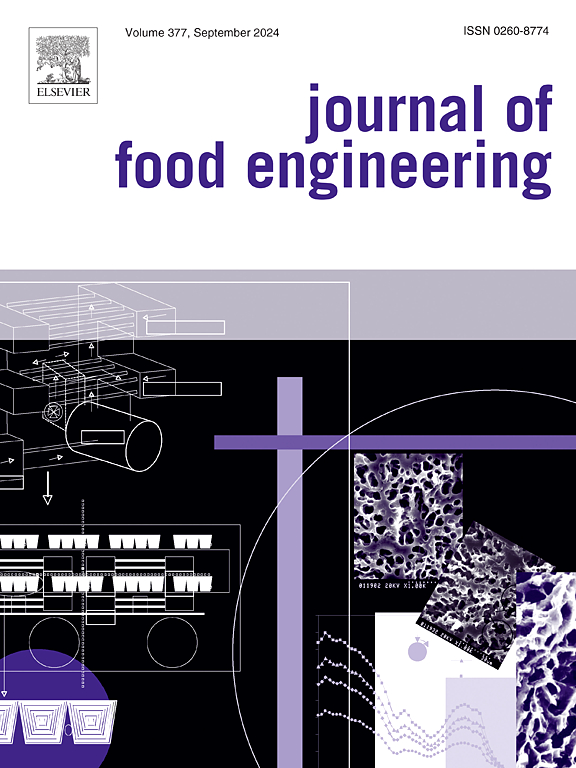Characterization of walnut shell crushing under multi-point loading based on numerical simulation
IF 5.8
2区 农林科学
Q1 ENGINEERING, CHEMICAL
引用次数: 0
Abstract
Nuts are widely consumed nutrient-dense foods requiring efficient shelling for quality preservation. Walnuts represent an ideal model for nut-cracking studies due to their characteristic shell structure and mechanical properties. understanding walnut shell fracture mechanisms requires investigation of internal mechanical properties; however, traditional experimental methods often fail to accurately capture stress evolution under real loading conditions. Therefore, this study adopts a finite-discrete element method (FDEM) combined with cohesive elements to construct a numerical model of the walnut shell, aiming to analyze the stress transfer mechanism on the surface of the walnut shell. This study introduces a non-uniform distribution coefficient to describe the stress distribution characteristics on the surface of the walnut shell under multi-point loading conditions and delves into the impact of loading positions and the number of loading points on the crushing characteristics of the walnut shell, thereby revealing the cracking mechanism of the walnut shell under multi-point loading. The research results show that the internal stress distribution within the walnut shell exhibits significant non-uniformity under different loading conditions. Especially under four-point loading with a non-uniform distribution coefficient of 0.92, the number of stress concentration points on the surface of the walnut shell is significantly higher than other loading methods. These results demonstrate that walnut shell failure primarily stems from tensile stress amplification at weak zones (e.g., suture lines), not shear. The validated model achieves 98.1 % accuracy against device tests, showing that optimized four-point loading maximizes fragmentation.
基于数值模拟的多点载荷下核桃壳破碎特性研究
坚果是一种广泛食用的营养丰富的食物,需要有效的剥壳以保持质量。核桃具有独特的壳结构和力学性能,是坚果开裂研究的理想模型。了解核桃壳断裂机制需要研究其内部力学性能;然而,传统的实验方法往往不能准确地捕捉实际加载条件下的应力演变。因此,本研究采用有限离散元法(FDEM)结合内聚单元构建核桃壳的数值模型,旨在分析核桃壳表面的应力传递机理。本研究引入非均匀分布系数来描述多点加载条件下核桃壳表面的应力分布特征,并深入研究加载位置和加载点个数对核桃壳破碎特性的影响,从而揭示多点加载下核桃壳的开裂机理。研究结果表明:在不同加载条件下,核桃壳内部应力分布具有明显的不均匀性。特别是在非均匀分布系数为0.92的四点加载下,核桃壳表面的应力集中点数量明显高于其他加载方式。这些结果表明,核桃壳的破坏主要是由于弱区(如缝合线)的拉应力放大,而不是剪切。经过验证的模型与设备测试的准确率达到98.1%,表明优化的四点加载使碎片化最大化。
本文章由计算机程序翻译,如有差异,请以英文原文为准。
求助全文
约1分钟内获得全文
求助全文
来源期刊

Journal of Food Engineering
工程技术-工程:化工
CiteScore
11.80
自引率
5.50%
发文量
275
审稿时长
24 days
期刊介绍:
The journal publishes original research and review papers on any subject at the interface between food and engineering, particularly those of relevance to industry, including:
Engineering properties of foods, food physics and physical chemistry; processing, measurement, control, packaging, storage and distribution; engineering aspects of the design and production of novel foods and of food service and catering; design and operation of food processes, plant and equipment; economics of food engineering, including the economics of alternative processes.
Accounts of food engineering achievements are of particular value.
 求助内容:
求助内容: 应助结果提醒方式:
应助结果提醒方式:


